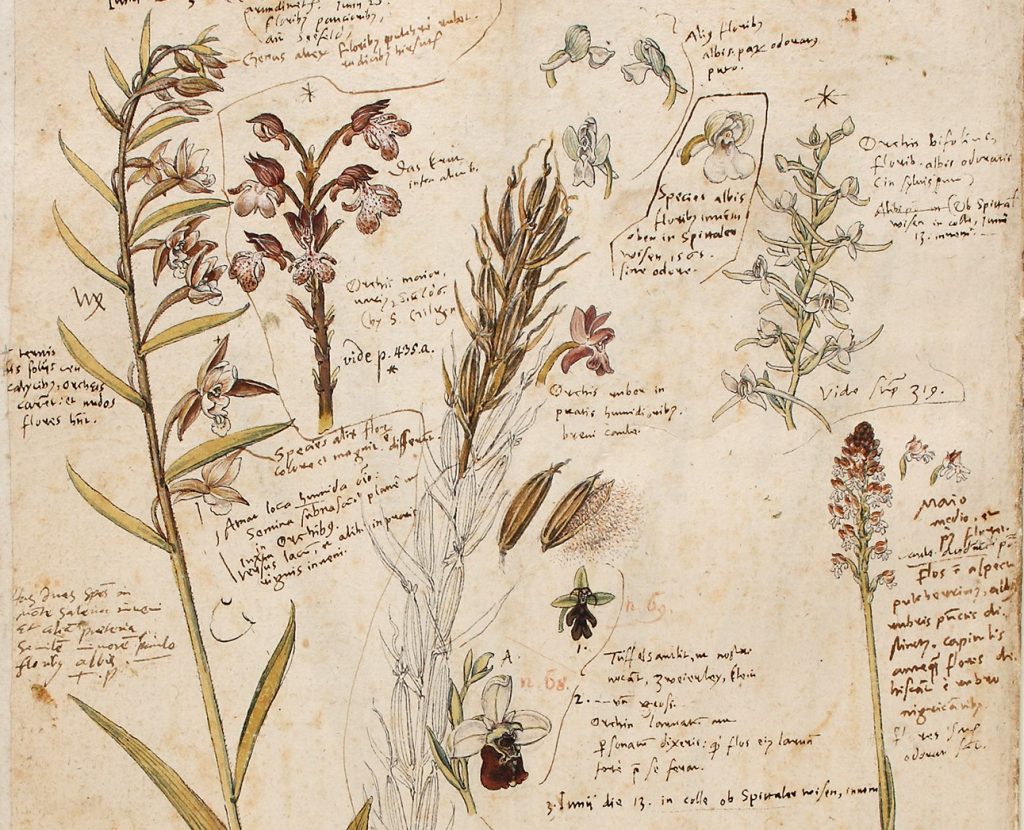
From Observation to Inspection: Florike Egmond on Microscopic Records in Early Modern Visual Albums of Nature
Stefan Hanß: Florike Egmond is a cultural historian of early modern sciences at the University of Leiden and a leading expert on sixteenth-century natural history. After presenting research on Adriaen Coenen, a sixteenth-century Dutchman who collected and drew marine life, Florike Egmond charted the wide web of knowledge production and exchange of naturalist Carolus Clusius. In 2010, then, Florike Egmond rediscovered hundreds of long-lost watercolour drawings of animals used as template models for the illustrations of the Historiae Animalium of famous Swiss humanist Conrad Gessner (1516–1565). She continued her field-shaping research on the culture of early modern visual albums of living nature and presented Eye for Detail: Images of Plants and Animals in Art and Science, 1500–1630 (Reaktion Books, 2017): a truly captivating and thought-provoking book on the logics and practices of quasi-microscopic visual enquiries in sixteenth-century image collections of plants and animals, and an important reference work for those interested in early modern microscopic records, thus, the agentive world of small-scale materialities. Florike Egmond will present a paper on seventeenth-century visual engagement with small-scale natural materiality at the upcoming British Academy event.
In your monograph, you explore what you called “a prehistory of the microscope” or “micro before the microscope”: a broader sixteenth-century culture of interest in the detailed observation of natural environments that precedes the invention of the microscope. You emphasise the significance of continuity. Microscopic interventions must be embedded in a broader culture of investigation, exploration, and visual experimentation focused on small-scale details of the natural world. What made you discover these insights?
Florike Egmond: The research that eventually ended up in Eye for Detail (and on which I continue to work) was in part inspired by the work of others. There was especially Edward Ruestow’s The Microscope in the Dutch Republic. The Shaping of Discovery (1996), but also inspiring research on scientific instruments that questioned the notion of ‘invention’, while the art historian Svetlana Alpers’s influential The Art of Describing: Dutch Art in the Seventeenth Century (1983) was challenging but also left me dissatisfied. Then, there were many unanswered questions that had emerged from my own earlier research, in particular on the manuscript albums by the Dutch fish merchant Adriaen Coenen (1560s–80s). He was fascinated by minute details in the anatomy of fish and molluscs, almost a century before Leeuwenhoek (fig. 1). But he was as interested in the large as in the small, and in behaviour as much as in bodies. In a sense it was Coenen who taught me to look at sixteenth-century ways of visualizing and representing, and who made me realize the relevance and value of albums and drawings—the non-printed visual sources. Gessner’s fascination in the 1550s with even smaller details of plant and flower anatomy, always combined with his interest in the whole living creature in all of its aspects, pointed me in the same direction.
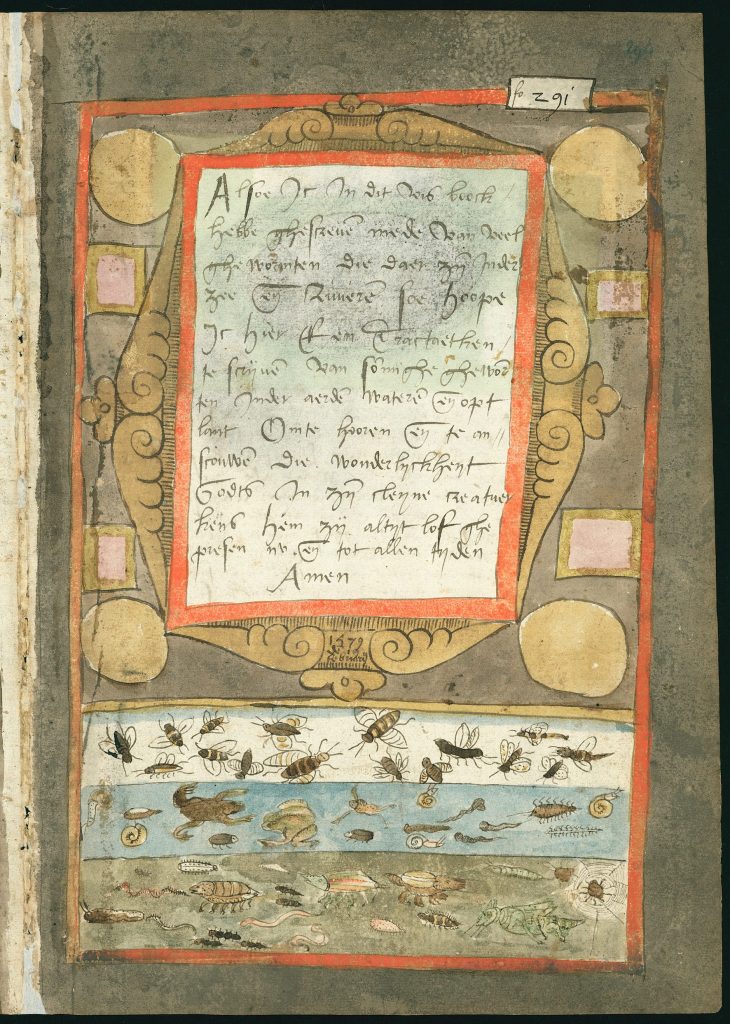
Fig. 1: Adriaen Coenen, Visboeck (1577–81), f. 294r. Ms 78 E 54, Koninklijke Bibliotheek/National Library of the Netherlands,The Hague.
FE: None of these themes and questions emerged by chance—but that is speaking with hindsight. They all belong to what became known as a visual and material ‘turn’ in historiography. At the same time, much new research in the cultural history of science made clear that an important artisanal culture existed long before circa 1620, in which lenses helped to produce extremely high-definition work in textiles, leather, feathers, precious stones and metals, and of course manuscript illumination. More and more questions were being raised about the relevance and very existence of the so-called ‘scientific revolution’: the implications of its possible non-existence or irrelevance, especially in the natural sciences, were (and still are) being investigated. For me these themes, topics and questions merged in the course of researching and writing Eye for Detail.
SH: Your research prompts historians to reconsider the value of early modern naturalists’ albums as primary sources. You show that such albums are not mere visual representations, but they functioned within broader cultures of enquiries. Vision was a tool of research, a mode of investigation, and a kind of engagement with the small-scale materiality of natural environments. Often, sixteenth-century naturalists tried to tackle the complex issue of material creativity and activity on microscopic scale. Spontaneous generation, for example, “the birth of living creatures from inanimate matter”, was a much-debated topic. How did sixteenth-century naturalists conceptualise and visualise the animate nature and creative potential of microscopic records?
FE: To comment first on your remark about the importance of albums and drawings collections as primary sources: not very many historians of science took images seriously until the material and visual ‘turns’ of the last circa 25–30 years. Martin Rudwick is an obvious exception in the domain of earth history. And Lucia Tongiorgi Tomasi in Pisa and Hans Walter Lack should be mentioned as among the few who combine a vast knowledge of botanical science and garden culture with visual and art historical expertise. For historians of science it has been much more usual to look, moreover, at printed illustrations than at the far less accessible unica in collections and albums. For many art historians, plant and animal drawings belonged to the domain of the ‘minor’ arts. All of this meant that a vast reservoir of early modern visual sources was in part ignored and in part underinvestigated. That European reservoir is even now still only very partially explored and promises many new finds and new openings, especially since access is changing thanks to digital media and internet. And that is not merely a technical matter: before digital photography and online access, the comparison of hundreds and thousands of images, housed as fragile and precious sources in many different institutions and countries, was not only hard, but often impossible. Naturally, not all such visual sources were connected with ‘scientific’ enquiry or can be regarded as what is now called epistemic images.
It is really difficult to answer your question about how sixteenth-century naturalists did “conceptualise and visualise the animate nature and creative potential of microscopic records”? How can we tell? Naturalists of the period 1500–1630s who actively engaged in research and whose image collections we can still access—think of Gessner, or Federico Cesi of the Accademia dei Lincei—never explicitly wrote about why they looked at extremely small items or details, and whether or why they used lenses or the microscope. That absence of explicit reflection in words by naturalists of the sixteenth century on (nearly all of) their methods is a major complication in studying this material. It implies—at least in most cases—that the images themselves have to be made to speak. The hundreds of drawings of fungi, mosses and other so-called ‘flowerless plants’ investigated with the microscope by Cesi and drawn for him, were part of a vast project to inventorize and classify the whole of nature, from biggest to smallest. The large number of drawings that he devoted to flowerless plants implies that he had a special interest in reproduction (fig. 2).
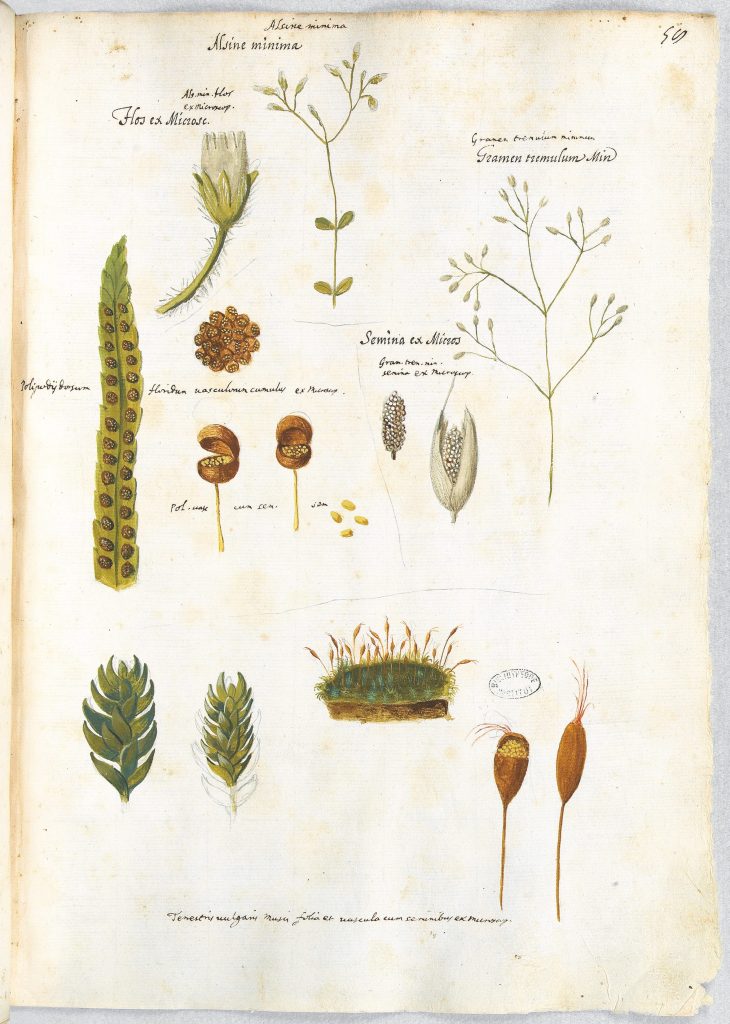
Fig. 2: Federico Cesi, Plantae et Flores, Ms 976, f.58. Bibliothèque de l’Institut de France, Paris.
FE: A further complication is the use of vision as a tool and the very different issue of representation. After all, we as historians do not actually see how people in the past looked; we only see how they represented, and (lacking verbal explanations in most cases that I am dealing with) then try to reconstruct the looking from the representation, which is a tricky process as all art historians know. It becomes even more tricky if we try to deduce fairly abstract concepts such as procreation, life, and so on from images.
One of the things that intrigues me is exactly this: how do we go about a visual-conceptual analysis of epistemic images that originated in a past in which people used different concepts from ours, and up to a point different visual techniques as well? Can we (further) develop analytic tools, something like a ‘visual philology’ that is not purely art historical but open to both stylistic issues and epistemic ones? I found Bertoloni Meli’s work on the representational modes of microscopy inspiring—to name just one example—but I would love to hear more debate on these questions.
SH: We will surely debate these questions in the up-coming British Academy event on early modern microscopic records. Reading your monograph, I was struck by the visual enquiries in the sixteenth-century Flemish Libri Picturati in fungi, mosses, and ferns as cohabitated forest environments. That interest in how microscopic small-scale webs of life can emerge in an environment of apparently life-less matter reminded me, to some extent, of the work of anthropologist Anna L. Tsing. In The Mushroom at the End of the World: On the Possibility of Life in Capitalist Ruins, she argues that explorations in matsutake ecologies, thus, the growing, collecting, and processing of a mushroom that prospers in human-disturbed forests around the globe, may create an awareness of different coevolutionary “world-making projects”. Human and non-human lives encounter, often on a microscopic scale, and such encounters create, shape, and change lives. The movements of different life lines coexist and form overlapping activities and networks, evolving assemblages, which build overlapping worlds that form the world as we know it in mutual and open-ended interactions. This is a truly fascinating book, which revolutionizes the way we think about the agentive capacity of microscopic records. How did sixteenth-century naturalists understand material enactment and the world-making agency of microscopic records when studying such subjects, e.g., through fungi, mosses, or ferns?
FE: Not yet having read Tsing’s work, I am interpreting your question a bit freely: what can these fascinating drawings of fungi, mosses and waterplants in the Libri Picturati of the 1560s tell us about an awareness of very small life-forms and the interconnectedness or perhaps even ecological awareness and sense of interdependency of all life forms among naturalists of the sixteenth century? And do these drawings tell us about that?
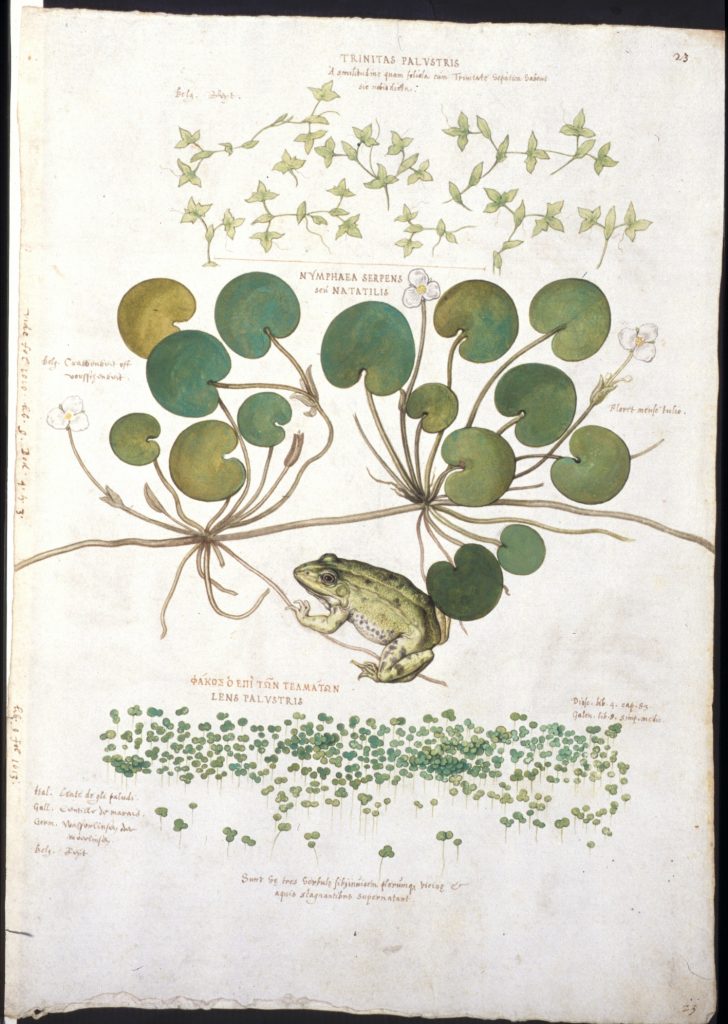
Fig. 3: Libri picturati, A26, f. 23. Commissioned by Charles de Saint Omer, Bruges, 1560s. Jagiellonian Library, Kraków.
FE: It is very tempting to immediately think of the medieval/early modern notion of the Great Chain of Being that linked the whole of creation in a hierarchical chain from God down to the minerals, or even further. And it would be even nicer to be able to link the notion of interconnectedness (your “small-scale web of life”) to an emerging awareness in the early modern period of ecological interdependence. However, I don’t think that the albums with drawings provide clear evidence in either direction. Taking Coenen and Gessner once more as examples, both men studied nature—big and small—as literally wondrous and admirable evidence of God’s creation. They were also practical men and hard-headed observers of plants and animals with an eye for the minute. They recognized interdependence between certain creatures, had some notion of the idea of habitat. But the main agenda of their investigations was to document, describe, and depict all of nature in as complete a way as possible, and therefore their interest in the minute came into it as well. Their interest in creation, procreation, and generation was shared from the twelfth century to the nineteenth century by researchers and naturalists.
Returning to the Flemish images of mosses etc., I think that they do point to a fascination with how such small creatures lived and procreated—not having clearly discernible flowers. For lack of written sources (the aristocratic collector who commissioned these drawings left no writings), it is really hard to go much further in interpreting these drawings. Interpretation is not made easier by the fact that opinions in the sixteenth century precisely on the hierarchy of life forms and even on life and generation itself differed enormously. Cesi thought of stones as having a soul or vital force, just like animals, plants, humans and angels. I doubt that Coenen or Gessner would have agreed with him.
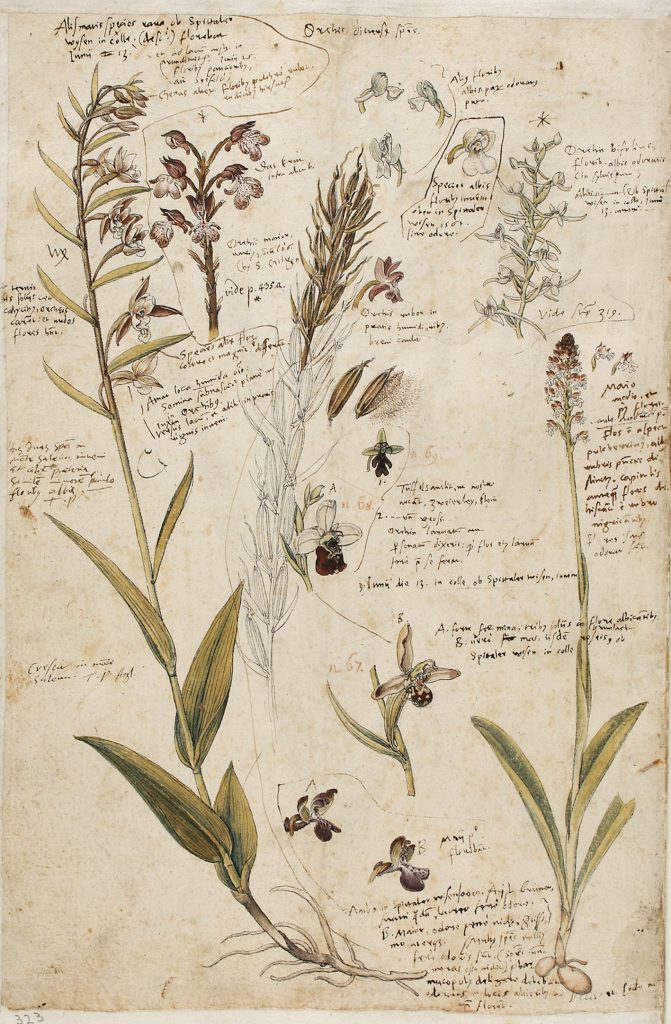
Fig. 4: Historia plantarum. Conrad Gessner and several painters, c. 1545–65, Basel. (2 vols). University Library Erlangen-Nuremberg: h62, Ms 2386, 1–2. This image is vol. 2, f. 382v.
SH: Conrad Gessner’s drawings of seeds and his studies of what we would call today ‘pollination’ are further examples of sixteenth-century naturalists’ shared interest in the animated environmental materiality of microscopic records (fig. 4). What do these drawings tell us about the early modern interest in small-scale matter?
FE: First of all, microscopic records (interpreted as visual records of small to very small naturalia or details of them) are not a special set of records in the period that I have been studying. Only the Cesi drawings of fungi, mosses etc. of the 1620s are bound in separate albums, and even those albums were part of a much larger image collection of naturalia, large and small. Judging by the albums and sets of drawings that still exist, ‘microscopy’ in this sense of the word was not a special interest, but part of the whole visual study of nature.
I’d like to go a bit further into what we actually can or cannot do with images such as Gessner’s. It seems clear from a variety of sources that sixteenth-century naturalists, gardeners, and farmers did not know exactly how pollination functioned. All of them were, however, perfectly aware of the practices of how to grow fruit. What did Gessner intend, therefore, when he (as both painter and naturalist) zoomed in on very small details of flowers, on what we now call pollen, on opened seeds, etc.? To me this looks like a visual record of an ongoing investigation into fertility and the precise location of the ‘forces’ or original ‘sources’ of life—if I try to think like a sixteenth-century naturalist and not like a modern person. I may be wrong, and historians of botany may be wrong too when they argue that the understanding or concept of pollination did not exist in the sixteenth century. These Gessner images may even be the proof that it did exist. But without explanation by Gessner—not forthcoming—we cannot know.
That said, I do think that the visual records on plants and animals of the period 1520–1620 do show a slowly increasing interest in the small, in detail, and in the interior of creatures, or what went on under the surface. It appears to be part of a long-term development in which external morphology was no longer enough: attention increasingly shifted from observation and depiction of outlines, forms and surfaces towards inspection (anatomizing, opening up naturalia) looking at and representing the inner parts and structures. That process is far better documented for human anatomy and picked up further speed in the seventeenth century. But why did this happen, and why then?
Further reading:
Egmond, Florike and Peter Mason, eds., The Whale Book: Whales and Other Marine Animals as Described by Adriaen Coenen in 1585 (London: Reaktion Books, 2003).
Egmond, Florike, “A Collection Within a Collection: Rediscovered Animal Drawings from the Collections of Conrad Gessner and Felix Platter,” Journal of the History of Collections 25, no. 2 (2013): 149–170.
Egmond, Florike, Eye for Detail: Images of Plants and Animals in Art and Science, 1500–1630 (London: Reaktion Books, 2017).
Egmond, Florike, The World of Carolus Clusius: Natural History in the Making, 1550–1610 (London: Pickering & Chatto, 2010).
Tsing, Anna L., The Mushroom at the End of the World: On the Possibility of Life in Capitalist Ruins (Princeton, NJ: Princeton University Press, 2015).
Florike Egmond, University of Leiden
Stefan Hanß, The University of Manchester






0 Comments